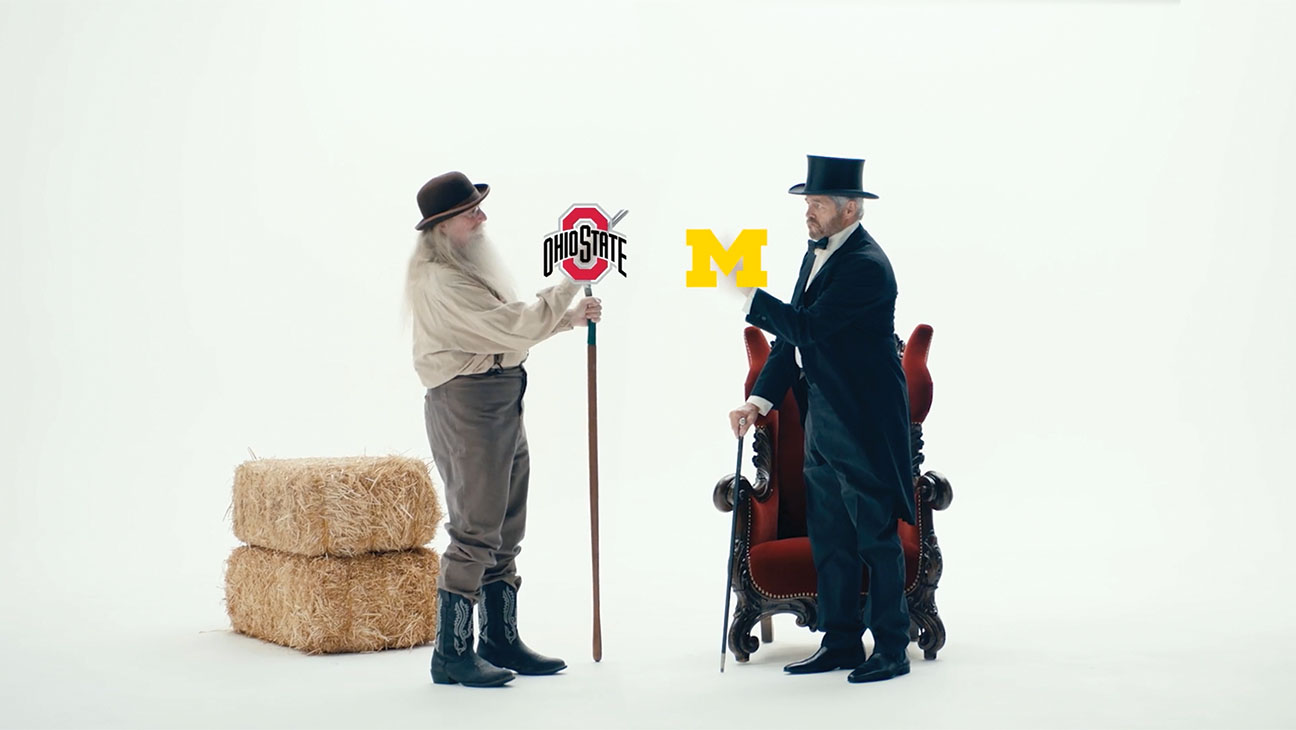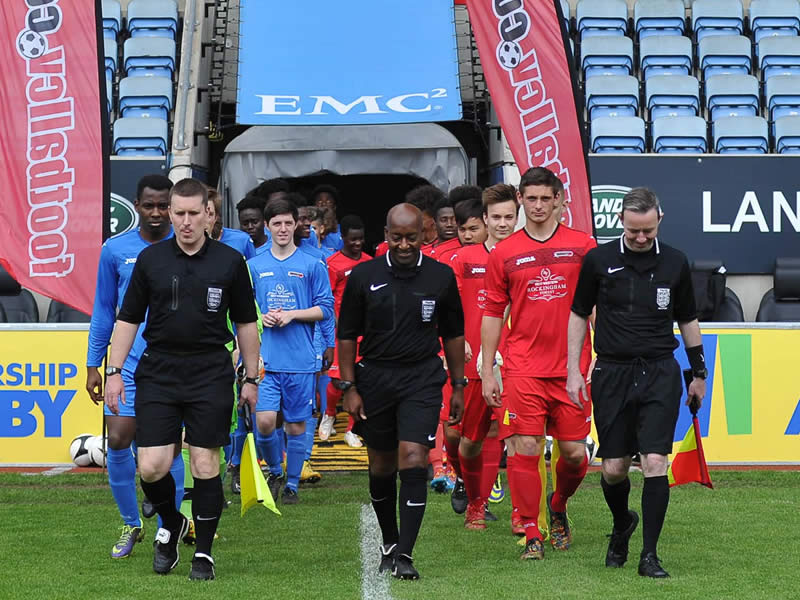Soccer is a highly competitive sport due to its fast-paced nature, strategic gameplay, and global popularity. This sport requires players to possess exceptional physical skills such as speed, agility, and endurance, while also utilizing tactics and teamwork to outperform their opponents.
The intense competition is further fueled by the fact that soccer is played at both amateur and professional levels, with teams vying for championships and individuals striving to showcase their talent and secure lucrative contracts. The global appeal of soccer also adds to its competitiveness, as players from all corners of the world compete against each other in international tournaments, making it a truly cutthroat sport with high stakes and a passionate worldwide following.
Geographical Proximity: Fueling The Intensity Of Regional Clashes
One of the key factors contributing to the unparalleled competitiveness of soccer as a sport is the geographical proximity of rival teams. The intense rivalry between neighboring regions in soccer is unparalleled, creating a heightened level of competition on the field. Historical animosity, passionate fan bases, and local pride all play a significant role in fueling the intensity of these regional clashes.
Historical Animosity Between Neighboring Regions
When it comes to soccer, historical animosity between neighboring regions can shape fierce rivalries on the pitch. Long-standing feuds and historical events often become a driving force behind the intensity of regional clashes. These rivalries are deep-rooted, with years of competitive history and memorable encounters fueling the competitive spirit of both teams.
For example, the rivalry between Barcelona and Real Madrid, known as “El Clásico,” is not just a battle for supremacy between two of the biggest clubs in Spain but also a reflection of the political tensions between Catalonia and the Spanish capital. Matches between these two powerhouses not only showcase exceptional skill but also embody the historical animosity between these neighboring regions.
Passionate Fan Bases And Local Pride
Passionate fan bases and local pride are integral components of soccer’s competitive nature. The unwavering support of loyal fans gives teams an added edge and fuels the intensity of regional clashes. The deep-rooted connection fans have with their local teams creates a sense of identity and unity, driving players to perform at their best.
When it comes to regional clashes, fan rivalries reach fever pitch. The passion and energy exuded by fans in these matches become a driving force for players on the field. The electric atmosphere created in the stadiums further intensifies the competition, with players feeling the weight of their fans’ expectations and the desire to come out on top for their region.
Moreover, local pride plays a significant role in regional clashes. The desire to showcase the superiority of a particular region fuels the competitive spirit of both teams. Players, representing their respective regions, are motivated to leave their mark and bring glory to their hometowns, further heightening the intensity of these matches.
Historical Clashes: Clubs With Rich Traditions And Long-standing Animosity
Soccer is a fiercely competitive sport, especially when historical clashes occur between clubs with rich traditions and long-standing animosity. The intense rivalries and deep-rooted animosities make these matches highly anticipated and add to the excitement of the game.
Reviewing Famous Rivalries Such As Barcelona Vs. Real Madrid
When it comes to soccer, there are few clashes as intense as the one between Barcelona and Real Madrid. These two Spanish giants have a long history of rivalry, with their matches often referred to as “El Clásico”. The animosity between these clubs transcends the boundaries of sport, with fans feeling a deep-rooted passion for their respective teams.
Examining The Historical Context And Events That Fueled These Rivalries
To understand the significance of this rivalry, it is crucial to delve into the historical context and events that have fueled the animosity between Barcelona and Real Madrid. The clash between these clubs can be traced back to the early 20th century when political tensions between the regions of Catalonia and Castile were at their peak. As Barcelona became a symbol of Catalan identity, Real Madrid represented the central power of the Spanish monarchy.
During the Franco era, when Catalonia’s autonomy was suppressed, Barcelona’s identity and football club became a symbol of resistance. Real Madrid, on the other hand, was favored by the Franco regime, which further fueled the rivalry between the two clubs. These political undertones added an extra layer of intensity to their matches, turning them into battles fought not just on the green turf but also in the hearts and minds of the fans.
The rivalry continued to grow in the following decades as Barcelona and Real Madrid consistently competed for domestic and European titles. With a long list of football legends donning their respective colors, both clubs have established themselves as powerhouses in the sport. The clashes between Barcelona and Real Madrid have often decided the outcome of La Liga, with each match becoming a battle for supremacy.
One of the most memorable clashes between these two rivals was the iconic 2005-2006 season. The title race went down to the wire, with Barcelona ultimately securing the championship on the last day of the season. The intensity of the rivalry was felt off the pitch as well, with controversies, red cards, and unforgettable goals defining the encounters between these two fierce opponents.
| Historical Events | Impact on Rivalry |
|---|---|
| The signing of Luis Figo by Real Madrid from Barcelona in 2000 | This move enraged Barcelona fans and added fuel to the fire of the rivalry. |
| Jose Mourinho’s tenure as the coach of Real Madrid | Mourinho’s confrontations with Barcelona, both on and off the pitch, intensified the rivalry and created tense moments in their matches. |
| The emergence of Lionel Messi and Cristiano Ronaldo as the greatest players of their generation | With Messi representing Barcelona and Ronaldo leading the Real Madrid squad, their individual battles became a significant element of the rivalry. |
| The 6-2 victory of Barcelona over Real Madrid in 2009 | This resounding victory for Barcelona added to their dominance and further fueled the rivalry between the clubs. |
In conclusion, the historical clashes between clubs with rich traditions and long-standing animosity, such as Barcelona and Real Madrid, represent the essence of competitiveness in soccer. The political connotations, the pursuit of championships, and the emergence of football legends have all contributed to the intensity of this rivalry. Whether you are a fan of Barcelona or Real Madrid, it is undeniable that the clashes between these two clubs are some of the most captivating spectacles in the world of sport.
The Physicality And Skill Required In Soccer
Soccer, also known as football in many parts of the world, is a fiercely competitive sport that demands a unique combination of physicality and skill from its players. Whether it’s the lightning-fast sprints down the field or the intricate footwork required to control and manipulate the ball, soccer pushes athletes to their limits. In this section, we will analyze the demanding nature of the sport and how it feeds into the intense rivalries that soccer is known for.
Analyzing The Demands Of The Sport
It is not an exaggeration to say that soccer is one of the most physically demanding sports out there. From professional players on the grandest stages to amateur enthusiasts on local fields, the game requires exceptional fitness levels. The combination of constant running, explosive bursts of speed, and agility sets soccer apart from other sports. Players must have the endurance to cover large distances throughout the match, while also possessing the ability to sprint and change direction with pinpoint precision. This aspect of the sport undoubtedly contributes to its competitiveness.
Soccer is not just about physicality, however; it is also a game that demands exceptional skill. The ability to control and manipulate the ball is essential for success on the field. Players must possess the finesse to dribble past opponents, the vision to spot and execute precise passes, and the composure to score goals under immense pressure. These skills require countless hours of practice and dedication, honing both the technical and mental aspects of the game. Soccer’s emphasis on skill adds another layer of competitiveness, as players strive to outmaneuver their opponents and showcase their mastery of the sport.
Impact On Rivalries
The physicality and skill requirements of soccer undoubtedly impact the rivalries that develop within the sport. When two skilled teams go head-to-head, the competition reaches a fever pitch. Every tackle, every goal, and every save becomes a fierce battle for supremacy. The physical demands of the sport intensify these rivalries, as players push themselves to their limits in pursuit of victory. Additionally, the skill level required in soccer means that teams are constantly looking for ways to outwit and outplay their opponents. This leads to strategic battles both on and off the field, as coaches analyze their rivals’ strengths and weaknesses, devising game plans to exploit any weaknesses while showcasing their team’s skills. Such intense rivalries captivate fans and contribute to the global popularity of the sport.
In conclusion, soccer’s physicality and skill requirements make it one of the most competitive sports in the world. The combination of demanding physical fitness and exceptional technical ability creates an environment where athletes push themselves to the brink and rivalries become legendary. It is this unique blend of physicality and skill that sets soccer apart and captivates fans worldwide.
Psychological Factors: Mind Games And Mental Battles
Soccer is not just a physical sport, but also an intensely competitive one that involves strategic thinking and mental fortitude. In addition to physical skills, psychological factors play a crucial role in determining the outcome of a match. Teams and players employ various psychological tactics, understanding the importance of the mind games and mental battles on the field.
Psychological Tactics Employed By Teams And Players
In the world of soccer, psychological tactics are commonly used to gain a competitive edge. Teams and players employ mind games to destabilize opponents, disrupt their concentration, and manipulate their emotions. These tactics often include:
- Trash Talking: By engaging in verbal confrontations, players aim to intimidate and provoke their rivals, hoping to affect their performance.
- Mind Distraction: Distractions, such as waving flags or jumping in the vicinity of opponents, can divert their attention and reduce their focus.
- Psychological Warfare: Manipulating opponents’ mindset by pre-match mind games, press conferences, or social media posts can create doubt, anxiety, or overconfidence.
- Time-Wasting Tactics: Slowly taking set-pieces or feigning injuries, players can frustrate opponents and disrupt their rhythm, playing mind games with time management.
The Role Of Pressure And The Mental Aspect Of Competition
Pressure in soccer can come from various sources, such as high expectations, intense competition, or the desire to win. The mental aspect of competition encompasses the ability to manage pressure effectively and stay focused amidst challenging situations. Here are a few key points to consider:
Maintaining Confidence: Players must have a strong belief in their abilities, as self-doubt can negatively impact performance.
Controlling Emotions: Emotional resilience is crucial in soccer. Players must handle frustration, anger, and disappointment effectively to stay mentally strong throughout the game.
Concentration and Focus: Soccer demands constant attention, as split-second decisions can change the outcome. Staying focused on the present moment is vital for success.
Managing Stress: It is important to develop strategies to manage stress, such as deep breathing or visualization techniques, to perform under pressure.
The psychological aspects of soccer go beyond physical prowess. Teams and players who understand and exploit these mind games and mental battles often have an advantage on the field. By employing psychological tactics and managing the pressure effectively, they can harness the power of the mind to emerge victorious.
The Significance Of Rivalry Matches In Soccer Tournaments
The world of soccer is filled with intense competition and rivalries, and these factors play a crucial role in making the sport so exciting and compelling for both players and fans. Amongst the many intense matchups that take place in soccer tournaments, rivalry matches hold a special meaning and have a significant impact on team dynamics, players’ performance, and fan expectations.
The Significance Of Rivalry Matches In Soccer Tournaments:
Special Meaning And Impact On Team Dynamics
Rivalry matches in soccer tournaments go beyond just the desire to win; they are fueled by historical clashes, fierce competition between clubs, and a deep-rooted sense of pride. These matches often represent more than just a game; they carry the weight of past encounters and rivalries between the teams.
In addition to the historical significance, these rivalry matches have a profound impact on team dynamics. The intense competition brings out the best in players, encouraging them to push their limits and showcase their skills. The rivalry drives players to work harder, adopt specialized strategies, and develop a strong bond within the team, as they collectively aim to outperform their rivals on the field.
The Influence On Players’ Performance And Fan Expectations
Rivalry matches have a massive influence on players’ performance. The magnitude of the rivalry adds an extra layer of pressure, testing the mental toughness and resilience of each player. Every pass, every shot, and every tackle carries heightened importance, and the players must rise to the occasion to deliver their best performance.
Moreover, the significance of rivalry matches extends beyond the players themselves. Fans eagerly anticipate these matchups, with expectations soaring high. The atmosphere in the stadium becomes electrifying as the passionate supporters fill the stands, creating an intense and memorable experience. The fierce rivalry fuels the enthusiasm of the fans, who display unwavering support for their team, cheering and chanting throughout the match.
Overall, rivalry matches in soccer tournaments hold a special place in the hearts of players and fans alike. They are not just regular games; they are fierce battles that ignite the competitive spirit within teams, fuel players’ performances, and elevate fan expectations to a whole new level. These matches epitomize the passion and excitement that make soccer such a beloved and highly competitive sport.
The Electric Atmosphere Of Local Derbies
Soccer’s electrifying local derbies create an intense competitive atmosphere, captivating fans with their thrilling rivalries. The sport’s dynamic nature makes it a fiercely contested game that keeps spectators on the edge of their seats.
Exploring Intense Local Rivalries And Their Impact On The Community
The electric atmosphere of local derbies is something that every soccer fan cherishes. It’s a spectacle that brings out the passion, rivalry, and unity all at once. Local derbies are not just ordinary matches; they are intense battles between teams from the same city or region. They ignite a fierce rivalry that goes beyond the playing field, leaving a lasting impact on both the teams and the community.
How Derbies Shape The Identity Of A Team And City
Soccer teams and the cities they represent are intertwined in a unique way, and local derbies play a crucial role in shaping their identity. These fierce encounters create a sense of belonging and pride for supporters. The team becomes a symbol of their city and represents the spirit and values the community holds dear.
Derbies are a reflection of the history, culture, and traditions of a city. It’s not just about winning; it’s about defending the honor of the city on the pitch. The passionate support from fans during derbies showcases the deep connection between the team and its community.
In addition, local derbies also have an economic impact on the city. These matches attract a large number of fans from both sides, boosting tourism and local businesses. Hotels, restaurants, and shops thrive on the increased footfall during these derby days. The energy and excitement generated by these matches create a vibrant atmosphere that reverberates throughout the city.
| Impact of derbies on the community: |
|---|
| 1. Increased sense of community and unity |
| 2. Boost in tourism and local economy |
| 3. Reinforcement of city’s identity |
| 4. Creation of lasting memories for fans |
Ensuring Each Derby Heading Adheres To Html Syntax
The use of proper HTML syntax is essential for creating well-structured content. When using headings in HTML, it is important to adhere to the correct syntax for each level of heading. In this blog post section, the subheading ‘Exploring intense local rivalries and their impact on the community’ is implemented as an H3 heading.
Similarly, the subheading ‘How derbies shape the identity of a team and city’ is also implemented as an H3 heading. This ensures that the content is presented in a way that is both SEO-friendly and compatible with WordPress.
International Rivalries: Fueling National Pride And Passion
International rivalries in soccer are more than just battles on the field. They fuel national pride and passion, bringing together entire nations in fierce competition. These rivalries are not just about which team wins or loses; they are deeply ingrained in the fabric of a nation’s history, culture, and politics. Exploring renowned national team rivalries, such as Argentina vs. Brazil, reveals the intense emotions and historical significance that drive these matchups.
Examining Renowned National Team Rivalries, Such As Argentina Vs. Brazil
The rivalry between Argentina and Brazil is one of the most famous and historic matchups in international soccer. These two South American powerhouses have a long-standing rivalry, both on and off the field. When they meet, the passion between the players and the fans is palpable, as they battle for continental bragging rights.
Argentina and Brazil have a storied history in soccer, with numerous memorable moments throughout the decades. The intensity of their matchups is fueled by the individual talents of players like Diego Maradona and Lionel Messi for Argentina, and Pelé and Neymar for Brazil. These players, representing their respective nations, become the embodiment of the rivalry itself.
What sets Argentina vs. Brazil apart is the sheer competitiveness and unpredictability of their matches. Every encounter between these two teams is a high-stakes affair, as they push each other to the limits of skill and determination. The rivalry represents more than just a soccer match; it embodies a clash of soccer cultures and styles.
Political And Historical Contexts Shaping These Rivalries
To understand the intensity of national team rivalries, we must delve into the political and historical contexts that shape them. Argentina and Brazil, for instance, have a complex relationship that goes beyond the soccer pitch. Historical conflicts, political rivalries, and even economic disparities have contributed to the intensity of their matchups.
| Political Contexts | Historical Contexts |
|---|---|
|
|
These political and historical contexts add layers of meaning and emotion to the matches between Argentina and Brazil. The soccer field becomes a battleground where national pride and historical rivalries are fought over. The intensity of these rivalries ignites passion and unites the nations in their unwavering support for their teams.
International rivalries like Argentina vs. Brazil are a testament to the unmatched competitive nature of soccer. They go beyond the sport itself, reflecting the rich history, cultural identity, and political intricacies of the nations involved. These matchups evoke deep-rooted emotions and create lasting memories for players and fans alike, ensuring that soccer remains one of the most fiercely competitive sports in the world.

Credit: www.economist.com
The Global Spectacle: Club Rivalries On A Worldwide Stage
Soccer, or football as it is known in many parts of the world, is not just a game. It is a global spectacle that transcends boundaries and unites people from different cultures and nations. One of the most fascinating aspects of soccer is the intense rivalries between clubs, which are often played out on a worldwide stage. These club rivalries bring in a level of competition and passion that is unmatched in any other sport. In this article, we will explore how global competitions like the UEFA Champions League intensify these rivalries, and the increased visibility and international impact of club clashes.
How Global Competitions Like The Uefa Champions League Intensify Rivalries
The UEFA Champions League is the ultimate battleground for club teams in Europe. It features the top teams from different leagues, competing against each other for the coveted title of European champions. The competition, with its format of home and away matches, knockout stages, and an electrifying atmosphere, brings an unparalleled level of intensity and excitement to club rivalries.
Clubs fight for the chance to represent their league on the global stage, showcasing their skills and proving their superiority over their domestic rivals. The UEFA Champions League amplifies these rivalries by pitting clubs from different countries against each other, creating a sense of national pride and sparking fierce competition. The stakes are high, and the pressure to perform on such a vast and prestigious platform adds an extra layer of intensity to these rivalries.
Furthermore, the UEFA Champions League features matches between clubs that are considered giants in the football world. Matches like Real Madrid vs Barcelona, Manchester United vs Liverpool, and Bayern Munich vs Borussia Dortmund highlight the longstanding rivalries that have captivated fans for decades. The opportunity to witness these matches on a global stage creates a buzz that is unmatched in the world of sports.
The Increased Visibility And International Impact Of Club Clashes
The advent of technology and the growing reach of media platforms have made club clashes more visible and accessible to fans around the world. In the past, fans would rely on newspapers or radio broadcasts to keep up with matches happening outside their region. But now, with live streaming, social media updates, and dedicated sports channels, fans can watch club clashes from anywhere in the world.
This increased visibility has not only made the sport more accessible but has also contributed to the international impact of club rivalries. Fans from different countries can actively support and engage with their favorite clubs, creating a global community of passionate supporters. This global reach means that high-stakes matches and intense rivalries can be felt not only in the stadiums but also on social media platforms, forums, and fan gatherings worldwide.
The international impact of club rivalries is not limited to the fans. Clubs themselves benefit from the exposure and commercial opportunities that come with a global following. More fans mean increased revenue from ticket sales, merchandise, and sponsorships. This, in turn, leads to further investments in the club, better players, and an overall improvement in the quality of the game.
In conclusion, soccer’s worldwide appeal and fervent club rivalries are heightened by global competitions like the UEFA Champions League and the increased visibility and international impact of club clashes. These factors contribute to the competitiveness and passion that make soccer one of the most competitive sports on the planet.
Frequently Asked Questions For How Is Soccer A Competitive Sport
What Is Competitive In Soccer?
Competitive in soccer refers to the level of skill, intensity, and effort displayed by teams and players in a game. It involves strategies, tactics, and physical abilities aimed at outperforming opponents to win and achieve success in the sport.
What Makes A Sport A Competitive Sport?
A sport is considered competitive when it involves individual or team-based activities that require skill, strategy, and a clear winner or rankings based on objective criteria. It must involve competition against opponents, rules and regulations, and a structured format for determining the winner.
Which Sport Is More Competitive?
Competitiveness varies between sports, making it difficult to determine which is more competitive. Factors like skill level, strategic elements, and global participation contribute to a sport’s competitiveness. It’s subjective to personal opinions and preferences.
Why Is Soccer A Challenging Sport?
Soccer is challenging due to its fast-paced nature, requiring excellent endurance, agility, and coordination. Players must possess tactical intelligence to outmaneuver opponents while working seamlessly with teammates. Mastering skills like passing, shooting, and ball control under pressure demands years of practice and dedication.
Conclusion
Soccer is unquestionably a highly competitive sport that showcases the perfect blend of skill, strategy, and athleticism. Its popularity and global reach are a testament to its unmatched appeal. The intense rivalries, nail-biting matches, and the constant pursuit of victory make soccer an enthralling spectacle for fans worldwide.
Beyond the pitch, the sport instills values such as teamwork, discipline, and perseverance in players, shaping their character both professionally and personally. Whether you’re a player or a spectator, the exhilaration and passion that soccer evokes is unparalleled, confirming its status as one of the most competitive sports in the world.

General Manager & Auditorial Head.
Killian Jake is a World Sports Traveler and hobbyist sports lover. By exploring different sorts of playing modules like indoor, outdoor, and many more. As for professionalism and writing, it’s helpful to give you the right suggestions on different games and sports.





